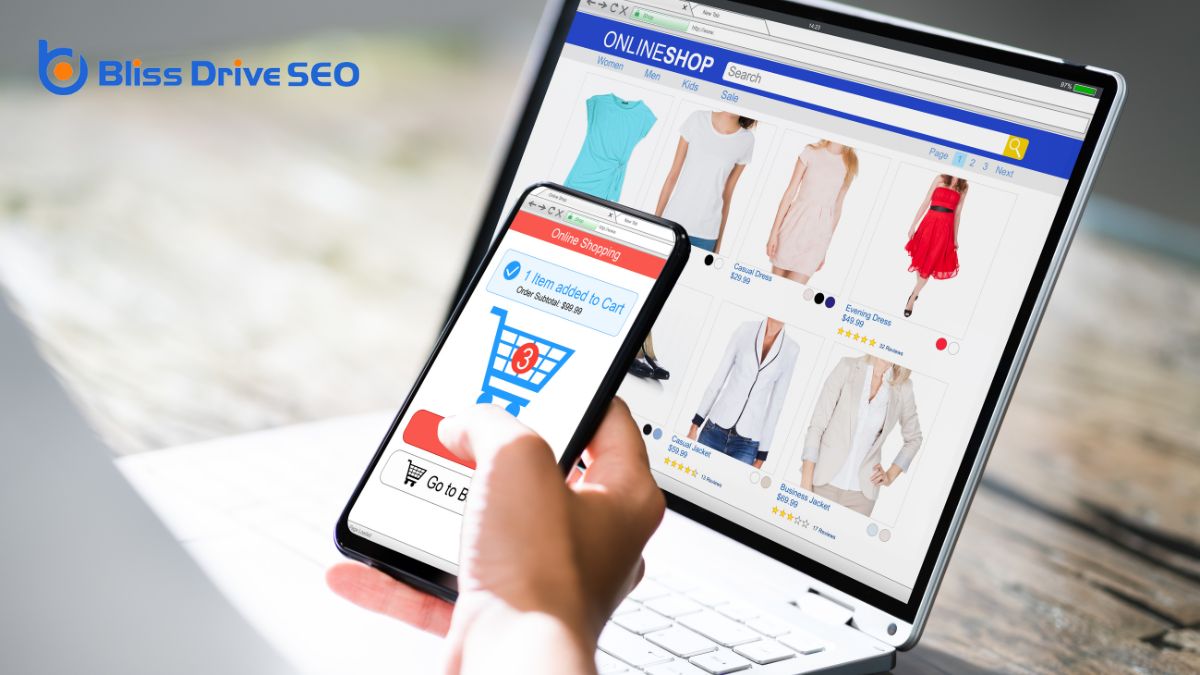Digital Marketing Services
Learn More About Us

You might be wondering how to effectively boost your conversionThe completion of a desired action by a referred user, such as making a purchase or filling out a fo... rates using analyticsThe systematic computational analysis of data or statistics to gain insights and support decision-ma.... It's not just about collecting data but understanding how to turn that data into actionable strategies. There are seven key tips that can guide you through this process. From examining your conversion funnelThe stages a customer goes through from initial awareness to final conversion. to optimizing your content and user experience, each step plays an essential role in enhancing your overall performance. You'll also learn how to improve forms and checkouts, utilize referralA user who visits a merchant's website through an affiliate's link. programs, and leverage social proofThe influence that other people’s actions have on one's own behavior, often seen in likes, shares,... to build credibility. Curious about how these strategies can reshape your approach?

To boost your conversion rates, start by collecting and analyzing data rigorously. Use tools like Google Analytics to track quantitative data on your website's traffic and user behavior. Focus on key metrics such as page views, exit rates, time spent on a page, and bounce rates to understand how users interact with your content. This will help you identify patterns and areas that need optimization.
Don't just rely on numbers; incorporate qualitative data to get a complete picture. Gather customer feedbackInformation provided by customers about their experience with a product or service, used to improve ... through surveys to understand their experiences and pain points. This qualitative data complements the quantitative insights, offering a more nuanced view of your users' behavior and preferences.
Once you've collected both types of data, analyze it to uncover actionable insights. Look for trends and anomalies that point to potential improvements.
For example, high exit rates on specific pages may indicate content issues, while low time spent on a page could suggest a lack of engagementThe interactions that users have with a brand’s content on social media..
Understanding your conversion funnel is vital for identifying where potential customers drop off and optimizing their journey for better conversions. By examining the conversion funnel, you can pinpoint drop-off points and take actionable steps to increase conversion rates. Use Google Analytics to track critical metrics like page views, exit rates, time spent, and bounce rates at each stage.
The AIDA funnel stages—awareness, interest, desire, and action—serve as a roadmap for your optimization efforts. Begin by analyzing the awareness stage to make sure your audience is engaged right from the start.
Then, move to the interest and desire stages, checking for content or functional issues that might be causing potential customers to lose interest. Finally, scrutinize the action stage, where customers make their final decision.
Optimization at each stage of the conversion funnel guarantees a smooth and intuitive customer journeyThe complete experience a customer has with a brand, from initial awareness to post-purchase interac.... Pay close attention to where users drop off and make targeted improvements. For example, if users leave during the desire stage, your call-to-action may need refinement.
To optimize your content, start by ensuring it clearly communicates your value proposition to visitors.
Use compelling call-to-actions with clear language, strategic placement, and contrasting colors.
Track your content's performance with Google Analytics to identify and refine what's working best.
Crafting a clear value proposition can dramatically boost your website's conversion rates by as much as 113%, according to WordStream. To achieve good conversion rates, you need to clearly communicate the benefits and unique selling points of your products or services. A well-defined value proposition should be the cornerstone of your website's content strategyA plan for creating, publishing, and managing content to meet business goals..
Start by crafting concise and compelling headlines that grab your visitors' attention. These headlines should succinctly convey what sets your offerings apart and why your target audience should care. Your value proposition needs to resonate with your target audience, so make sure to test different versions to see which one works best.
A strong value proposition not only increases user engagementThe level of interaction and involvement users have with social media content. but also helps reduce bounce rates.
When visitors immediately understand the benefits of your products or services, they're more likely to stay on your site and explore further. This extended engagement improves the likelihood of conversions.
Once you've established a clear value proposition, the next step is to focus on crafting compelling call-to-actions (CTAs) that drive conversions. A well-crafted CTA can boost your conversion rates by up to 121%.
To achieve this, use action-oriented language that prompts immediate responses from visitors. Phrases like "Get Started Now" or "Claim Your Free Trial" can significantly enhance the effectiveness of your CTAs.
Ensure your CTA button stands out and is easily noticeable. A well-designed CTA button can further improve conversion rates by up to 13%. Place clear and visible CTAs on every page to guide users toward the desired actions seamlessly. Your goal is to make it as easy as possible for visitors to take the next step.
Don't forget to test variations of your CTAs to find the most effective messaging for your audience. Experiment with different wording, colors, and placementsSpecific websites or locations within websites where ads can appear. to see what resonates best. Effective messaging is key to compelling CTAs, so pay attention to what works and what doesn't.
To enhance user experience, begin by streamlining navigation paths, making it easier for visitors to find what they're seeking.
Increasing page load speed is essential, too, as quicker pages can greatly boost your conversion rates.
Don't forget that clear and immediate calls to action can guide users effectively and enhance overall engagement.
A website's navigation can greatly impact user experience and conversion rates. Simplifying your site navigation is essential to keep users engaged and reduce bounce rates. When users can effortlessly find what they're looking for, their journey through your site becomes seamless. Start by ensuring clear navigation elements; a well-organized menu can make a world of difference. Menu optimization helps guide users to important conversion points without frustration.
Dive into Google Analytics to understand user behavior flow and identify any navigation bottlenecks. Are visitors abandoning pages because they can't find what they need? Use this insight to refine your navigation paths. Internal linkingLinks that connect different pages on the same website. also plays a significant role. Properly linked pages can leadA potential customer referred by an affiliate who has shown interest in the product or service but h... users naturally from one piece of content to another, eventually guiding them to conversion points.
Minimize clicks required to reach key pages. The fewer clicks it takes for a user to find essential information, the better their experience will be. Streamlining navigation paths isn't just about aesthetics; it's about creating an intuitive and satisfying user journey.
After streamlining your site's navigation paths, it's vital to focus on another important aspect of user experience: page load speed. Faster page load times can greatly reduce bounce rates by 32% and boost conversions by 7%. Given that 47% of users expect pages to load in 2 seconds or less optimizing your website's load speed is crucial.
A 1-second delay in page load timeThe time it takes for a webpage to fully load, affecting user experience and conversion rates. can result in a 7% reduction in conversions, making it evident that slow load times can significantly impact your bottom line. Google also considers page speedThe time it takes for a webpage to load, affecting user experience and conversion rates. a ranking factor, so improving your page speed can enhance both user satisfaction and search engine rankingsThe position at which a website appears in the SERP..
To enhance your page load times, start by optimizing images, enabling compression, and leveraging browser caching. These Conversion RateThe percentage of visitors who complete a desired action, such as making a purchase or filling out a... Optimization Techniques can make a noticeable impact. Tools like PageSpeed Insights can offerThe specific product or service being promoted by affiliates. valuable insights and recommendations to further improve your page speed.
Mobile users are particularly sensitive to slow load times, with 53% abandoning sites that take more than 3 seconds to load. By focusing on improving your website's load speed, you'll not only boost your conversion rate but also provide a better overall user experience.

Optimizing forms and checkouts is essential for boosting your website's conversion rates. Start by including only the essential fields in your forms to minimize friction and improve completion rates. The fewer fields users have to fill out, the more likely they are to finish the process.
Simplify your checkout process by reducing the number of steps involved. This will help reduce cart abandonment and increase conversions.
Enhance customer engagementThe level of interaction and involvement a customer has with a brand. by implementing chat features and social media shopping options. These tools offer real-time assistance and can guide users through the checkout process more smoothly.
Use cart abandonment emails to re-engage users who didn't complete their purchase, potentially recovering lost sales.
Focus on enhancing user experience by continuously optimizing forms and checkouts based on customer feedback and behavior analysis. Pay attention to what your customers are saying and how they're interacting with your site. This insight will help you identify pain points and areas for improvement.
Boosting conversion rates through optimized forms and checkouts sets a strong foundation for your website's success. However, to take it to the next level, you should utilize referral programs. These programs can dramatically increase conversion rates by up to 50%, according to Extole.
Leveraging referrals taps into the power of social proof, resulting in a 15% higher conversion rate, as reported by ReferralCandy.
When customers refer friends, 83% of those friends are more likely to make a purchase, demonstrating the effectiveness of friend referrals (Nielsen). This method not only boosts purchases but also enhances customer acquisition by 30%, as per a McKinsey & Company study.
The benefits don't stop there—referral programs can generate a 16% higher lifetime value for customers compared to those who weren't referred (Wharton School of Business).
Harnessing social proof can greatly enhance your website's conversion rates. Implementing elements like customer testimonialsPositive statements from customers about their experiences with a product or service, used to build ... and reviews can increase your conversion rates by up to 270%. These testimonials and reviews showcase real-life satisfaction, building trust and encouraging potential customers to take action.
Displaying trust badges, awards, or certifications prominently on your site also boosts credibility and trust, which can lead to higher conversion rates.
Incorporate social media shares and follower counts to highlight your product's popularity. When visitors see that others are engaging with your brand, they're more likely to follow suit. Influencer endorsements and user-generated content further amplify this effect. InfluencersIndividuals with the power to affect the purchasing decisions of others due to their authority, know... bring their own credibility to your brand, while user-generated content adds authenticity.
Real-life examples like customer success storiesA feature on platforms like Instagram and Facebook where users can post photos and videos that disap... and case studiesIn-depth analyses of specific instances or examples to highlight success stories or lessons learned.... are powerful tools. They provide prospective customers with tangible proof of your product's benefits. Sharing detailed case studies can illustrate how your product has resolved issues for others, making it easier for potential customers to envision the same success for themselves.
What metrics are most important for tracking conversion rates?
How can analytics help identify conversion barriers?
What role does segmentationThe process of dividing a market or customer base into distinct groups with similar characteristics.... play in improving conversion rates?
Can analytics toolsSoftware used to track and analyze website performance, user behavior, and marketing efforts. predict future conversion trends?
What is the best way to test changes aimed at improving conversions?
By embracing data analytics and customer feedback, you'll uncover valuable insights to enhance your conversion rates. Focus on refining your conversion funnel, content, and user experience. Don't forget to streamline your forms and checkout processes. Engage customers with referral programs and leverage social proof to build trust. Implement these strategies, and watch as your conversions soar, solidifying your brand's credibility and driving growth. Now's the time to act and transform your business.
